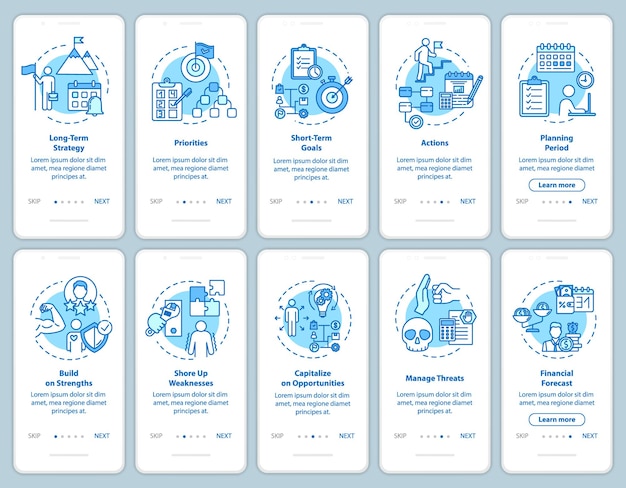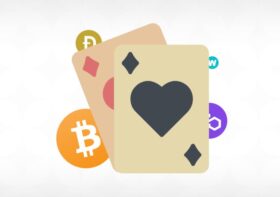Best Practices for Blockchain Development: An In-Depth Guide

Blockchain technology has emerged as one of the most innovative and disruptive technologies of the 21st century. It has the potential to revolutionize the way businesses and individuals interact and transact with each other. As the technology matures, more and more organizations are looking to develop applications based on the blockchain. However, developing blockchain applications is not a trivial process; it requires specialized knowledge and expertise. Therefore, understanding and following best practices for blockchain development is essential if you want to leverage the power of the technology. In this in-depth guide, we will discuss the best practices and tips for developing successful and secure blockchain applications. From understanding the fundamentals of blockchain technology to developing applications using the right tools https://boostylabs.com/blockchain, we cover all aspects of blockchain development.
Benefits of Blockchain Development
There are several benefits of blockchain development. First, blockchain is a decentralized network that allows you to remove third-party intermediaries from your business processes. This will help you increase efficiency by reducing the dependency on third parties. Next, blockchain helps you securely store sensitive data with proper encryption to prevent unauthorized access. This helps you comply with regulatory requirements and protect confidential client information. Lastly, blockchain enables you to create smart contracts that can self-execute once the conditions are met. This will significantly improve your business process automation. Another important reason for investing in blockchain development is to build a strategic advantage against rival organizations. As the blockchain technology matures, it is expected to be adopted across all industries. If your organization integrates blockchain at an early stage, you will have a significant advantage against your competitors.
Understanding the Fundamentals of Blockchain Development
Before you start developing blockchain applications, it is important to understand the fundamentals of blockchain technology. A blockchain is a decentralized peer-to-peer network that enables the creation of virtual currencies and smart contracts. A blockchain network consists of nodes that store and process information. These nodes store information in a distributed database and have no central server. The blockchain network is governed by consensus algorithms that ensure the integrity and authenticity of data. To understand the fundamentals of blockchain development, you must be familiar with the following concepts: – Blockchain: A blockchain is a decentralized peer-to-peer network that enables the creation of virtual currencies and smart contracts. – Cryptocurrency: A virtual currency that can be used for peer-to-peer settlement. – Smart Contract: A computer program that runs on a decentralized blockchain network. It can be used for enforcing contract terms between two parties. – Distributed Database: A database that is not stored on a centralized server but is distributed across multiple nodes. – Consensus Algorithms: Rules and algorithms that govern the blockchain network and ensure the integrity and authenticity of data. – Byzantine Fault Tolerance: A system that can tolerate up to a certain number of faulty nodes in a distributed system.
Choosing the Right Tool for Blockchain Development
Blockchain development is a complex process that involves various technologies, tools, and programming languages. It is important to choose the right tool for blockchain development to ensure a successful project outcome. Since blockchain technology is evolving rapidly, you have to keep up with the latest developments and integrate the latest tools in your stack. While choosing the right tool for blockchain development, you should consider the following factors: – Proficiency of the development team: You should pick a tool that is easy to use and has a low learning curve. A complex tool will increase project costs and make the development process more time-consuming. – User requirements: You must understand your user requirements before you select a tool. If you have specific requirements, you should look for a tool that can satisfy them. – Technology stack: You must understand your technology stack before you select the right tool for blockchain development. It will help you identify the gaps in your technology stack and choose the right tool that can plug those gaps. – Budget: You must estimate the total project cost before you select a tool for blockchain development. You may incur additional expenses if you choose a complex and expensive tool.
Developing Secure Blockchain Applications
Now that you have a clear understanding of the fundamentals of blockchain development, you must focus on developing secure blockchain applications. A blockchain network is robust and secure by design. However, you must take certain precautions to ensure that your blockchain applications are secure. You can follow these best practices to secure your blockchain applications: – Choose a suitable consensus algorithm: You must select a consensus algorithm that is suitable for your organization. You must select a consensus algorithm that is robust, decentralized, and auditable. – Deploy a secure blockchain network: You must deploy a secure blockchain network to prevent malicious attacks on the network. You can secure your blockchain network by enabling proper access control, choosing the right consensus algorithm, and maintaining a healthy network. – Use cryptography to protect data: You must use cryptography to protect sensitive data stored in the blockchain network. You can use cryptographic algorithms to encrypt the data and prevent unauthorized access. – Use proper data governance: Data governance is the process of controlling and authorizing access to sensitive data. You must implement proper data governance to protect sensitive data stored in the blockchain network.
Testing and Deploying Blockchain Applications
Once you have developed secure blockchain applications, you must test the applications to ensure that they are functioning as expected. It will help you identify any issues in the application and make any required changes. It will also help you reduce the maintenance cost of the application because you will be able to troubleshoot issues quickly. – You should test your smart contracts to make sure that they are functioning as expected. You must test the functionality and functionality of the application to ensure that it is working as expected. – You must also test the security of your blockchain application. You can use security tools to identify any loopholes and vulnerabilities in the application. – You should also test the scalability of your blockchain application. You must test the application to make sure that it is capable of handling high volumes of traffic. – It is also important to test the performance of your blockchain application. You must test the application to make sure that it is capable of performing efficiently even under heavy loads.
Security Considerations for Blockchain Development
The blockchain is a secure and robust technology by design. However, you must take certain precautions to ensure that your blockchain applications remain secure. You must properly understand the technology and identify any security issues in the application. You must also follow best practices for developing blockchain applications to keep the networks secure. You can follow these best practices to ensure that your blockchain applications are secure: – Select the right consensus algorithm: You must select a consensus algorithm that is suitable for your organization. You must select a consensus algorithm that is robust, decentralized, and auditable. – Deploy a secure blockchain network: You must deploy a secure blockchain network to prevent malicious attacks on the network. You can secure your blockchain network by enabling proper access control, choosing the right consensus algorithm, and maintaining a healthy network. – Use cryptography to protect data: You must use cryptography to protect sensitive data stored in the blockchain network. You can use cryptographic algorithms to encrypt the data and prevent unauthorized access. – Use proper data governance: Data governance is the process of controlling and authorizing access to sensitive data. You must implement proper data governance to protect sensitive data stored in the blockchain network.
Tips for Optimizing Blockchain Performance
Apart from securing your blockchain application, you must also focus on optimizing the performance of your blockchain network. A blockchain network can be resource-intensive, slow, and expensive to run. Therefore, you must take certain steps to optimize the performance of your blockchain network. You can follow these best practices to optimize the performance of your blockchain network: – Use a lightweight blockchain network: You can deploy a lightweight blockchain network that can handle low volumes of transactions. Lightweight blockchains are more cost-effective and less resource-intensive than full blockchains. – Deploy a scalable blockchain network: You should deploy a scalable blockchain network that can handle high volumes of transactions. A scalable blockchain network can easily handle sudden surges in traffic and maintain performance. – Use a cost-effective blockchain network: You must use a cost-effective blockchain network. You can evaluate different blockchain solutions available in the market to select the most cost-effective one. – Follow the best practices for developing blockchain applications: You must follow the best practices for developing blockchain applications to optimize the performance of the network.
Conclusion
Now that you have a clear understanding of blockchain development, it is important to follow the best practices for blockchain development. It will help you develop secure blockchain applications that are scalable and cost-effective. Follow these best practices to optimize the performance of your blockchain network. When you follow these best practices for blockchain development, you will be able to leverage the full potential of blockchain technology.


